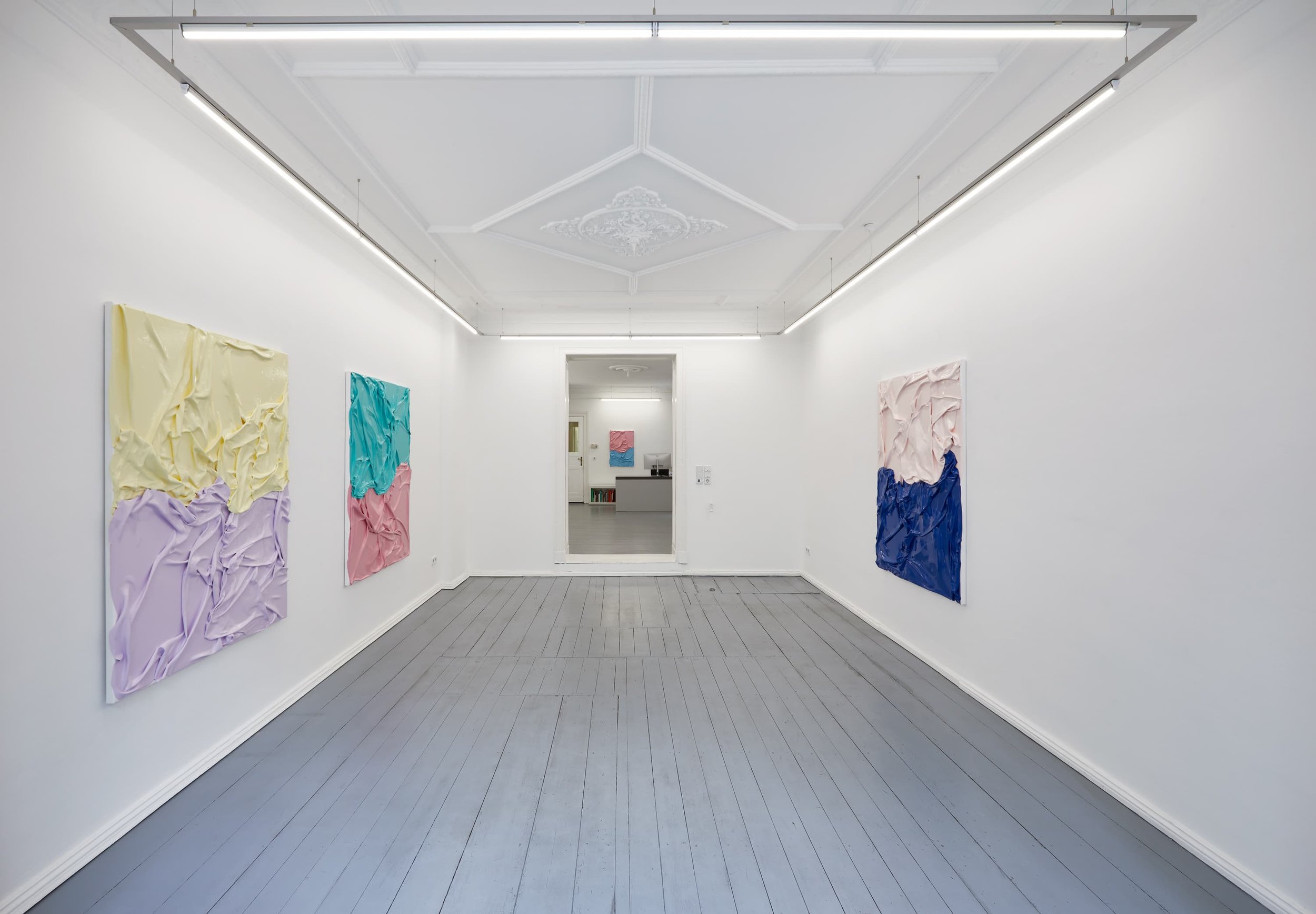
Plastic Horizons Taubert Contemporary Berlin Germany
Huseyin Sami works with the material and application possibilities of paint. “Possibilities” is the operative word here. He uses acrylic house paint, which, by its very nature, is plastic. Thus Sami’s work with paint - which results in paintings, performances, sculptures, and installations - addresses the notion of possibility through plasticity. Fitting, then, that in his new suite of paintings, two paint skins in contrasting (characteristically pastel) colours are arranged one above the other, forming horizons - the ultimate symbols of speculation and discovery. These paintings are, in the literal sense, plastic horizons. Figuratively, they speak to Sami’s preoccupation with testing the limits of his chosen subject - painting - with deliberate uncertainty, and in such a way that the workability inherent to paint is pivotal to the process. Harold Rosenberg famously described the lineage of such tendencies in painting as follows: “At a certain moment the canvas began to appear to one American painter after another as an arena in which to act […] What was to go on the canvas was not a picture but an event.” Like the Action Painters to which Rosenberg refers, Sami’s paintings record the events of their making. The skins Sami produces, which represent an entire ongoing subset of his oeuvre, begin as puddles of liquid paint that are dried completely over an unknown duration before being peeled up and laid onto substrates like swathes of fabric. Captured in the undulations of each skin is a code that implies certain spatial, temporal, and mechanical conditions. No two skins are the same. Thus, we can elaborate to define each painting as an event horizon. In physics, the event horizon is a boundary around a black hole beyond which nothing can escape, not even light. Theoretically, that which crosses an event horizon is dematerialised and stored as information inside a black hole - information that can, arguably, be reconfigured identically or anew elsewhere in the universe. Similarly, Sami’s arrests of paint carry with them information pertaining to changes of state - with intention, but without predetermination. Working with, rather than against, the unknowable is a way for Sami to glimpse its ever-changing unpredictability, however fragmentary that perception may be. His practice embraces plasticity as an opportunity for reckoning with its ontology. Using painting as a means for modelling mutability brings poetic resonance to this pursuit, and though it maps only a tiny fraction of the many fleeting events comprising our present, this is precisely the point of Sami’s paintings, which remind us that latent in all configurations and reconfigurations are futures yet unknown. - James Gatt










